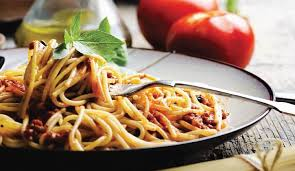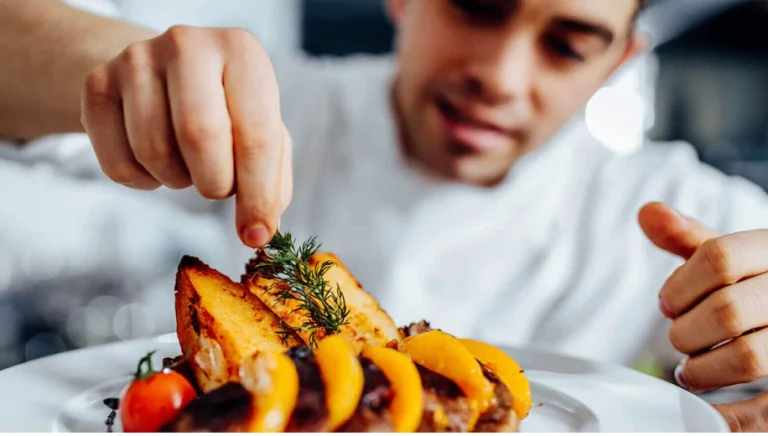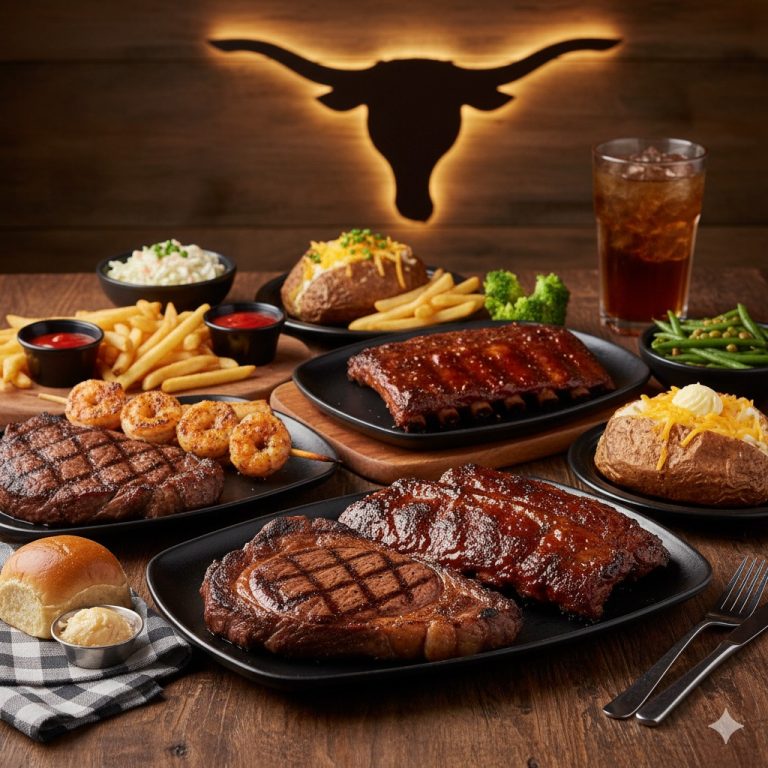Italian vs. French Cuisine: Which Food Is Truly Better?
Food in both Italy and France carries meaning far beyond nourishment. It represents identity, memory, and national pride. To understand why people debate which cuisine is “better,” one must first understand what each nation expects from a meal.
In France, food has long been a matter of art and hierarchy. Centuries of royal dining shaped its reputation for refinement. The legacy of chefs like Auguste Escoffier formalized recipes and introduced the concept of haute cuisine, where balance, precision, and presentation matter as much as flavor. Meals are structured — entrée, plat, fromage, dessert — and served with discipline. Cooking in this tradition resembles composition in music: technique first, creativity second.
Italy approaches food from the opposite direction. Its culinary culture emerged from peasant traditions rather than palaces. Recipes were handed down from mothers and grandmothers, not written by chefs. The emphasis lies in spontaneity and heart — “la cucina della mamma.” A perfect Italian dish often depends on one principle: quality ingredients treated simply and respectfully. Where the French chef calculates, the Italian cook feels.
These differing philosophies create two dining worlds. French food seeks to impress through mastery — every sauce reduced, every garnish deliberate. Italian food, by contrast, connects through emotion — a shared plate of pasta, a splash of olive oil, a conversation that stretches through the afternoon. French cuisine is theatre, Italian cuisine is song. Both are expressive, but they perform in different keys.
Their differences also reflect geography and temperament. France, diverse and stratified, developed a culture of rules and regional distinctions: Normandy butter, Bordeaux wine, Lyonnaise cuisine. Italy, fragmented by city-states and mountains, built local food identities that remained intimate and flexible. You can drive fifty kilometers and encounter a new dialect, a new cheese, a new pasta shape.
Ultimately, both cultures turned food into a declaration of values. The French express excellence through precision and aesthetics; the Italians through simplicity and generosity. What unites them is reverence. A French dinner table or an Italian Sunday lunch is sacred space — a pause from the world, where the country tells its story one plate at a time.
The Ingredient Philosophy
If French and Italian cuisines were people, their personalities could be summed up by two ingredients: butter and olive oil. Each defines not only flavor but worldview.
Butter is structure. It thickens sauces, binds pastries, and provides richness. French cuisine leans on it as the anchor for flavor, from croissants to béarnaise. Olive oil, in contrast, is freedom — fluid, sunny, unmeasured. Italian cooking builds on it to highlight freshness rather than conceal flaws.
Geography explains this divergence. France stretches from cool Atlantic coasts to Alpine pastures, ideal for dairy. Italy leans toward the Mediterranean, where olive trees thrive and winters are mild. Thus, French cuisine evolved around creams, stocks, and reductions, while Italian dishes revolve around herbs, vegetables, and oils.
Regional diversity strengthens both. The French south shares the Mediterranean light of Provence, producing dishes like ratatouille rich with eggplant, zucchini, and tomatoes — not far from the spirit of Italian caponata from Sicily. Yet even here, the French cook controls flavor through seasoning and order, while the Italian allows ingredients to converse naturally.
Seasonality is another shared pillar interpreted differently. In France, seasonality follows rules: oysters in months with “r,” asparagus in spring, game in autumn. In Italy, it’s an instinct — whatever tastes best today finds its way onto the plate. French markets display artful order; Italian markets are alive with noise and improvisation.
Bread and cheese show similar contrast. French bakers pursue crust and crumb perfection; Italians celebrate texture variety — chewy ciabatta, crisp focaccia. French cheeses often reflect refinement through controlled fermentation; Italian cheeses express place and warmth — mozzarella di bufala, Parmigiano-Reggiano, pecorino Romano.
The choice of ingredients reflects how each culture perceives nature. The French transform it, sculpting flavors into something transcendent. The Italians honor it, elevating the raw ingredient’s truth. Butter and olive oil are not just fats; they’re philosophies — one solid and deliberate, the other fluid and intuitive.
read more : What To Expect in Your First Online Doctor Appointment?
The Art of Technique — Science Meets Soul
French and Italian cooking meet at the crossroad of technique and intuition. Both seek excellence, but through different disciplines.
French cuisine treats cooking as applied science. Precision governs everything — temperature, timing, ratios. Classical techniques such as braising, poaching, and sautéing form the foundation of culinary education worldwide. Escoffier’s codified methods made French cooking the grammar of gastronomy: once you learn the language, you can write your own culinary sentences. Dishes like coq au vin or boeuf bourguignon illustrate this logic — patience, control, and depth of flavor developed through reduction and layering.
Italian cooking thrives on rhythm rather than formula. A recipe is guidance, not law. You cook pasta “al dente” by feel, not stopwatch. Salt is added “quanto basta” — just enough. Osso buco or risotto alla Milanese succeed when the cook listens to the ingredients: the sound of simmering, the texture under a spoon.
The French kitchen resembles a laboratory. Every step has purpose, every motion hierarchy. Brigade systems in professional kitchens mirror military discipline: chef de cuisine, sous-chef, commis. Italian kitchens function like family gatherings — everyone tasting, talking, adjusting. The same dish might vary slightly from day to day, and that’s part of the beauty.
Even desserts mirror this divide. The French soufflé is a triumph of chemistry and air; the Italian tiramisu relies on balance and softness, assembled with care but without calculation. French patisserie celebrates geometry — éclairs, mille-feuille, tarts with glossy glaze. Italian sweets often appear humble — cannoli, biscotti, panna cotta — yet carry warmth and memory.
Technique defines transmission too. France institutionalized knowledge through culinary schools and apprenticeships, making technique teachable and repeatable. Italy passed knowledge around kitchen tables. A grandmother’s gesture taught more than a manual ever could.
Modern chefs now blend both traditions — applying French precision to Italian spontaneity. Yet the contrast endures because it reflects two human impulses: the drive to perfect and the desire to feel. French food trains the mind; Italian food feeds the soul.
From Table Setting to Conversation
Dining in France and Italy reveals the social essence of their cuisines. Each country treats the meal as performance, but the mood differs entirely.
A French meal unfolds like theatre. The table setting matters: polished silverware, folded napkins, correct placement of glasses. Courses follow choreography — appetizer, main, cheese, dessert — often served by staff trained in etiquette. Even at home, French families value presentation and pacing. Conversation flows in measured rhythm, pausing for the next plate. Wine pairings change with each course, reinforcing precision and refinement.
In Italy, the table is a stage too, but the play is unscripted. Plates appear in generous waves, conversation overlaps, laughter punctuates pauses. The structure is simpler — antipasto, primo, secondo, dolce — but the lines blur as everyone shares. Food is not served to guests but with them.
Both rituals express how each culture values community. The French meal celebrates form; the Italian meal celebrates togetherness. One prioritizes respect for craft, the other for connection. Yet both resist the fast-food mindset by demanding attention. Time slows down, phones disappear, and the act of eating becomes social ceremony.
Restaurants mirror these differences. A Parisian bistro often feels elegant yet reserved, with careful service and restrained decor. An Italian trattoria bursts with sound and motion — tables close together, dishes passed across aisles. In both cases, the environment shapes how flavor is perceived. Even restaurant chairs tell part of the story: upright and formal in France, invitingly worn in Italy, designed for long hours of conversation.
Wine culture unites both nations but reveals distinct philosophies. French winemaking emphasizes terroir and classification — Bordeaux, Burgundy, Champagne. Italian wine culture celebrates abundance and variety — Chianti, Barolo, Prosecco — more personal than institutional. A French sommelier may guide your choice; an Italian host simply pours.
Whether structured or spontaneous, both dining experiences share one virtue: presence. To sit at a French or Italian table is to engage with life, not rush through it. The pace of the meal reflects the pace of thought — deliberate or flowing, yet always human.
Who Won the World’s Palate?
The reach of French and Italian cuisines extends far beyond Europe. Both conquered the global palate, but through different strategies.
France exported prestige. By the 19th century, its culinary influence shaped the world’s restaurants and schools. The concept of the chef as artist and authority comes directly from French culture. The Michelin Guide, launched in 1900, formalized culinary excellence through stars — a system still revered. French terms dominate menus worldwide: consommé, sauté, au jus. Haute cuisine became synonymous with luxury, from Paris to Tokyo.
Italy exported comfort. When millions of Italians emigrated to the Americas in the late 19th and early 20th centuries, they brought their recipes and habits with them. Pizza, pasta, and espresso became everyday staples. Italian food adapted easily to new ingredients and local tastes, creating endless hybrids like New York-style pizza or Chicago deep dish.
While French cuisine built institutions, Italian cuisine built homes. You find French restaurants in capitals and five-star hotels; you find Italian ones on every corner. French chefs influenced the professional elite; Italian cooks influenced daily life.
Global media amplified this divide. French cuisine appears in fine dining shows and Michelin documentaries, emphasizing artistry and difficulty. Italian cuisine dominates lifestyle media — cooking shows, travel vlogs, and comfort-food blogs. Its accessibility became its superpower.
Yet both adapted gracefully to globalisation. French bistros appear in Seoul and São Paulo, often modernized with local flavors. Italian trattorias in Tokyo or Melbourne maintain authenticity while embracing fusion. Each cuisine now acts as ambassador for values — refinement versus warmth, mastery versus community.
If victory means ubiquity, Italy wins. If it means influence on the culinary arts, France still leads. Together they shaped the vocabulary of modern taste. The world’s palate, from pasta carbonara to crème brûlée, speaks fluent Italian and French.
Health, Sustainability, and Modern Shifts
In an era of health awareness and environmental concern, both cuisines evolve. Each offers lessons from its traditional roots.
Italian food naturally aligns with modern health ideals. The Mediterranean diet — rich in vegetables, olive oil, grains, and lean proteins — supports heart health and longevity. Meals emphasize balance rather than restriction, and portions favor satisfaction over excess. Fresh produce, minimal processing, and seasonal eating define everyday cooking.
French cuisine, often associated with butter and cream, might seem indulgent. Yet studies show the “French paradox”: despite higher fat consumption, rates of heart disease remain low. Moderation, portion control, and mindful dining explain much of it. Meals are slower, rarely eaten on the go, and portions are smaller than American equivalents.
Sustainability reshapes both traditions. Italy’s regional sourcing and market culture fit modern farm-to-table trends naturally. Local olive oil producers, cheese makers, and vineyards sustain small economies. France, long rooted in appellations and protected designations, formalized terroir decades ago — a system that protects biodiversity and craftsmanship.
Both countries contribute to the Slow Food movement, born in Italy and quickly embraced in France. This philosophy resists industrial shortcuts and promotes cultural preservation. Modern chefs combine traditional ethics with innovation — French restaurants serving plant-forward menus, Italian kitchens experimenting with heritage grains.
Technology also changes how both cuisines sustain themselves. Vertical farms in Paris and solar-powered vineyards in Tuscany represent a meeting of tradition and innovation. Sustainability is no longer niche; it defines how chefs think about the next century.
In health and environment, both cuisines prove timeless. Their philosophies — simplicity and respect — turn out to be the foundation for long-term wellbeing.
Comfort vs. Celebration
Taste connects deeply to emotion, and here the difference between French and Italian cuisine becomes personal.
Italian food comforts. It’s built around sharing, repetition, and memory. A bowl of pasta can recall family Sundays, a drizzle of olive oil can remind one of a grandmother’s kitchen. Its beauty lies in accessibility — everyone can participate. Comfort comes not from luxury but from familiarity.
French food celebrates. It invites admiration. A meal in a French restaurant feels like an event — courses arriving with ceremony, wine uncorked with precision. Pleasure comes from anticipation and discovery. Every flavor has intention; every presentation commands attention.
These emotional tones extend to how people cook at home. Italians often cook collectively — multiple hands stirring, tasting, passing plates. The process matters as much as the outcome. French home cooking, while equally valued, often separates cook and guest; one creates, the others enjoy.
The psychology of flavor supports this difference. Italian cuisine uses broad, harmonious notes — sweetness of tomato, salt of pecorino, freshness of basil — evoking relaxation and nostalgia. French cuisine often plays with contrast — acidity against fat, crispness against creaminess — stimulating excitement and attention.
Yet both trigger similar feelings of belonging. Whether one savors boeuf bourguignon or spaghetti alla carbonara, the act of sharing food builds identity and connection. Both cuisines remind us that food is language — one spoken through heart, the other through craft.
Taste as a Reflection of Values
Asking whether Italian or French cuisine is “better” misses the deeper truth. Food is not a competition but an expression of who we are and what we value.
Italian cuisine speaks to warmth, community, and joy in simplicity. It thrives on intuition and togetherness. French cuisine speaks to mastery, refinement, and intellectual beauty. It celebrates control and creativity.
Choosing between them often mirrors personality. Those who seek comfort and spontaneity lean Italian; those drawn to structure and artistry lean French. But both cuisines ultimately share the same spirit — respect for ingredients, time, and human connection.
Their coexistence defines modern dining. Without France, we might lack culinary technique; without Italy, we might forget why we cook. The world needs both — the mind of the French kitchen and the heart of the Italian table.
In every bite, one finds a reflection of history, geography, and human nature. The question isn’t which cuisine is better, but what kind of pleasure we seek. Do we crave the quiet sophistication of a French dinner or the open laughter of an Italian lunch? Either way, food triumphs — as culture, art, and the simplest way to feel alive.







